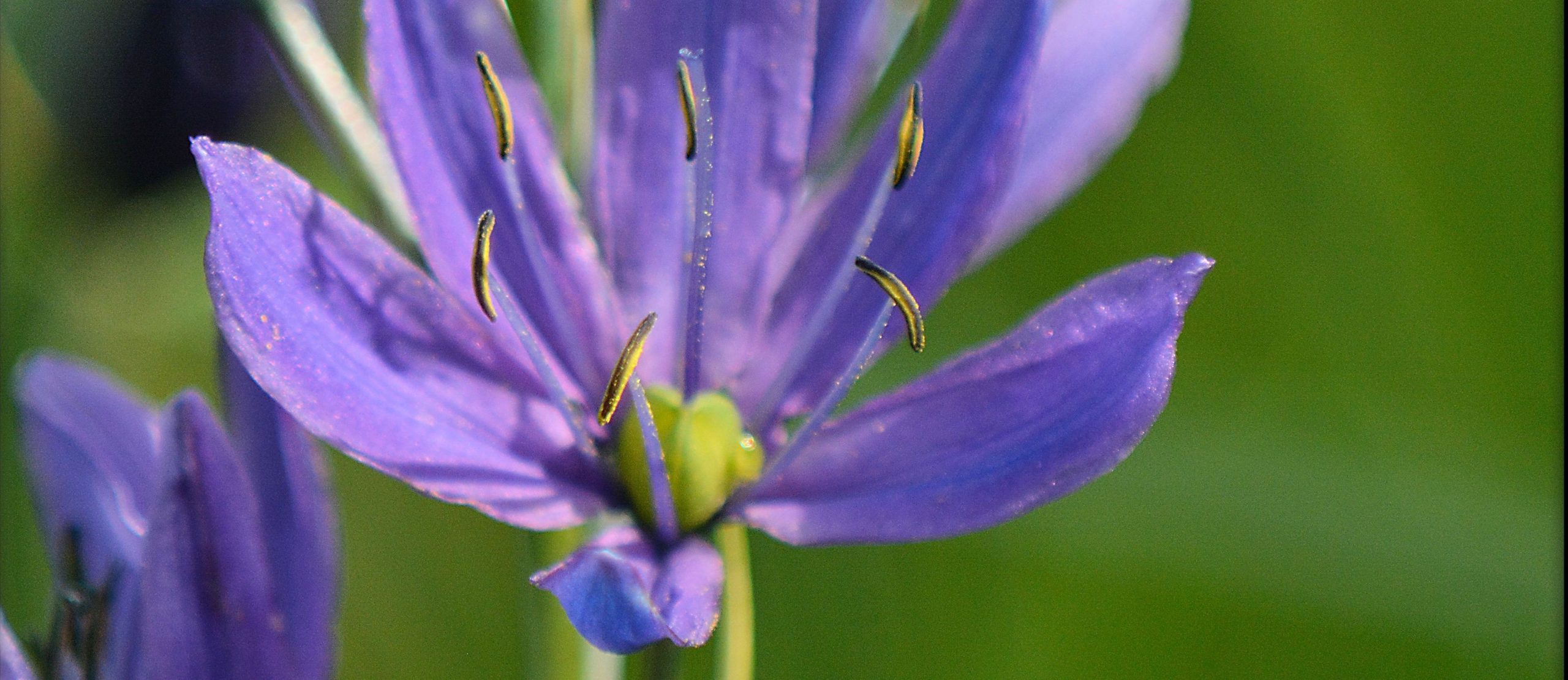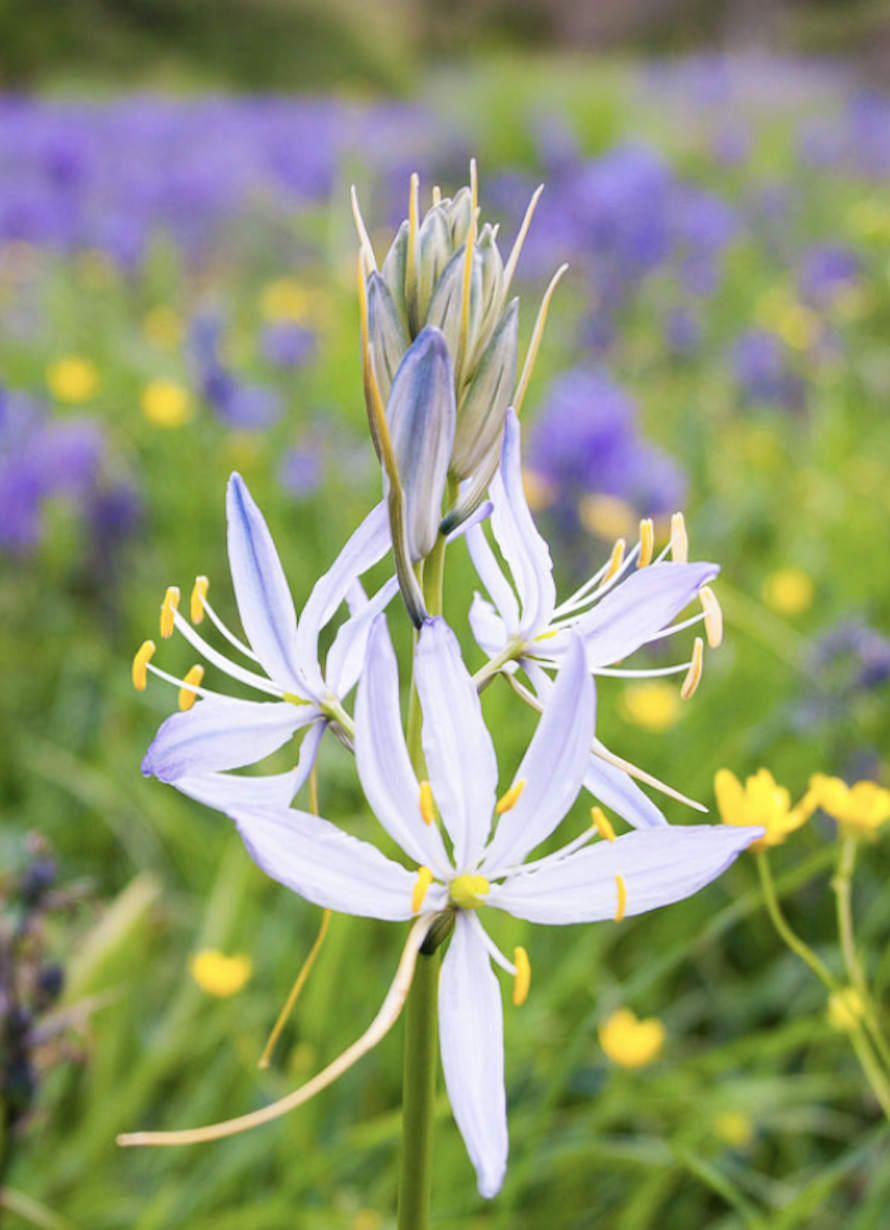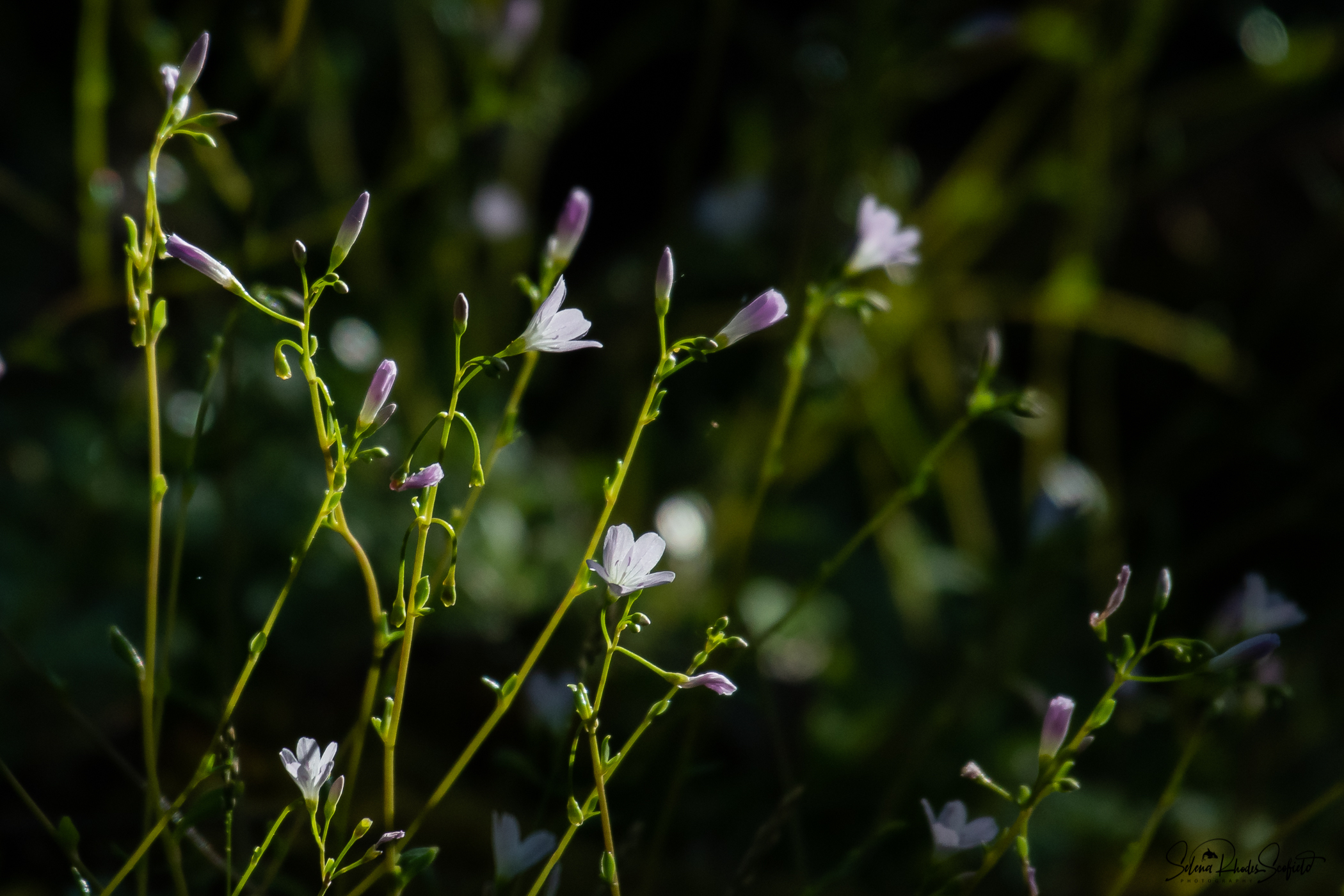
Camas Flower | Image Selena Rhodes
Victoria’s Sun-Loving Perennials, Bulbs, and Groundcovers
This latest dry summer has got everyone at Clean Air thinking here about the ways to help the gardens we manage be as water smart as possible. Today, we’re continuing the conversation about sun-loving natives, and how we can best establish gardens to get through Victoria’s cool winters and dry summers. Future posts will discuss garden bed preparation, but the first question in any water smart garden should be plant selection, so today we focus on the best native bulbs and groundcovers for Victoria gardens.
Groundcover Choices
When it comes to deciding what the best bulbs and groundcovers are for this climate, we are in luck, as the indigenous populations of the island have shown us the way. Victoria and southern Vancouver Island are home to one of the richest and most distinctive native plant systems in Canada, with species that have evolved to fit this landscape in ways that became central to Indigenous food systems. Today we still see open, long-felled clearings of blue camas, marking agricultural plots where the plant has been cultivated for many years by Coast Salish peoples. Species such as camas (Camassia quamash), below, or harvest brodiaea (Brodiaea coronaria), and chocolate lily (Fritillaria lanceolata) were central to Indigenous food systems, and were carefully cultivated and harvested for their nutritious bulbs.
Other plants, like sea thrift (Armeria maritima) and broad-leaved stonecrop (Sedum spathulifolium), reflect the island’s rugged coastal environments, thriving in salty winds and thin soils. Their persistence in such challenging conditions makes them models of resilience—and perfect candidates for modern, climate-conscious gardens. Early bloomers like satin flower (Sisyrinchium douglasii) and the delicate nodding onion (Allium cernuum) feed pollinators just as they emerge from winter, linking these plants to the broader web of life that sustains our ecosystems.
So it’s safe to say we have an opinion!
Here are some of our favourite species, as selected by Chief Garden Designer and Crew Lead, Selena Rhodes.

Sun-loving Favourites: Perennials, Bulbs, and Groundcovers
Sea Thrift (Armeria maritima)
Sea thrift thrives on windswept bluffs where little else can grow. Its grassy tufts and pink pom-pom flowers bring a cheerful splash of colour while stabilizing coastal soils. Hardy and drought tolerant, it’s ideal for rock gardens and sunny borders.
Harvest Brodiaea (Brodiaea coronaria)
This violet star-flowered bulb is a late-spring highlight of Garry oak meadows. Historically, its edible bulbs were harvested by Indigenous peoples, connecting it to long-standing food traditions. In gardens, it thrives in dry, sunny soils, blending gracefully with grasses.
Hooker’s Onion (Allium acuminatum) & Nodding Onion (Allium cernuum)
These native onions bloom as summer begins, sending up pink umbels that attract bees and butterflies. Hooker’s onion stands upright, while nodding onion bends elegantly before releasing its flowers. Both are hardy, drought-tolerant, and edible, adding texture and pollinator value to dry gardens.
Fool’s Onion (Brodiaea hyacinthina)
Not a true onion, this bulb produces white, starry flowers that often bloom into summer, extending the wildflower season. Once an Indigenous food source, fool’s onion also provides late nectar for pollinators. Its resilience makes it an easy naturalizer.
Camas (Camassia quamash)
The most iconic native bulb, camas paints meadows blue each spring. For millennia, Coast Salish peoples cultivated its edible bulbs, shaping entire ecosystems through selective harvesting and controlled burning. Today, camas remains a keystone species, supporting biodiversity and offering gardeners both heritage and beauty.
Chocolate Lily (Fritillaria lanceolata)
With mottled brown-purple bells, chocolate lily is striking and unusual. Though its bulbs carry a musky scent, they were once roasted or steamed for food. It prefers well-drained soils in sun or partial shade, rewarding gardeners with distinctive blooms.
Satin Flower (Sisyrinchium douglasii)
Among the first flowers of spring, satin flower (or Douglas’ blue-eyed grass) produces vivid purple blossoms with golden centers. Compact and easy to grow, it supports early pollinators and fits neatly into borders or meadow plantings.
Broad-Leaved Stonecrop (Sedum spathulifolium)
This hardy succulent clings to rock faces and thin soils, storing water in its silver-green rosettes. In summer, it bursts into clusters of yellow flowers, feeding bees. As a groundcover, it thrives where little else will grow, even in hot, dry spots.
Bringing Natives into your Garden

Miners Lettuce | Image Selena Rhodes
These native perennials, bulbs, and groundcovers are more than beautiful—they embody resilience and ecological connection. Adapted to Victoria’s summer-dry climate, they require little care once established while supporting pollinators and dpreserving cultural heritage. From the shimmering blue of camas to the silver cushions of stonecrop, these plants offer a climate-smart, locally rooted approach to gardening.



